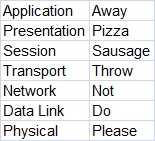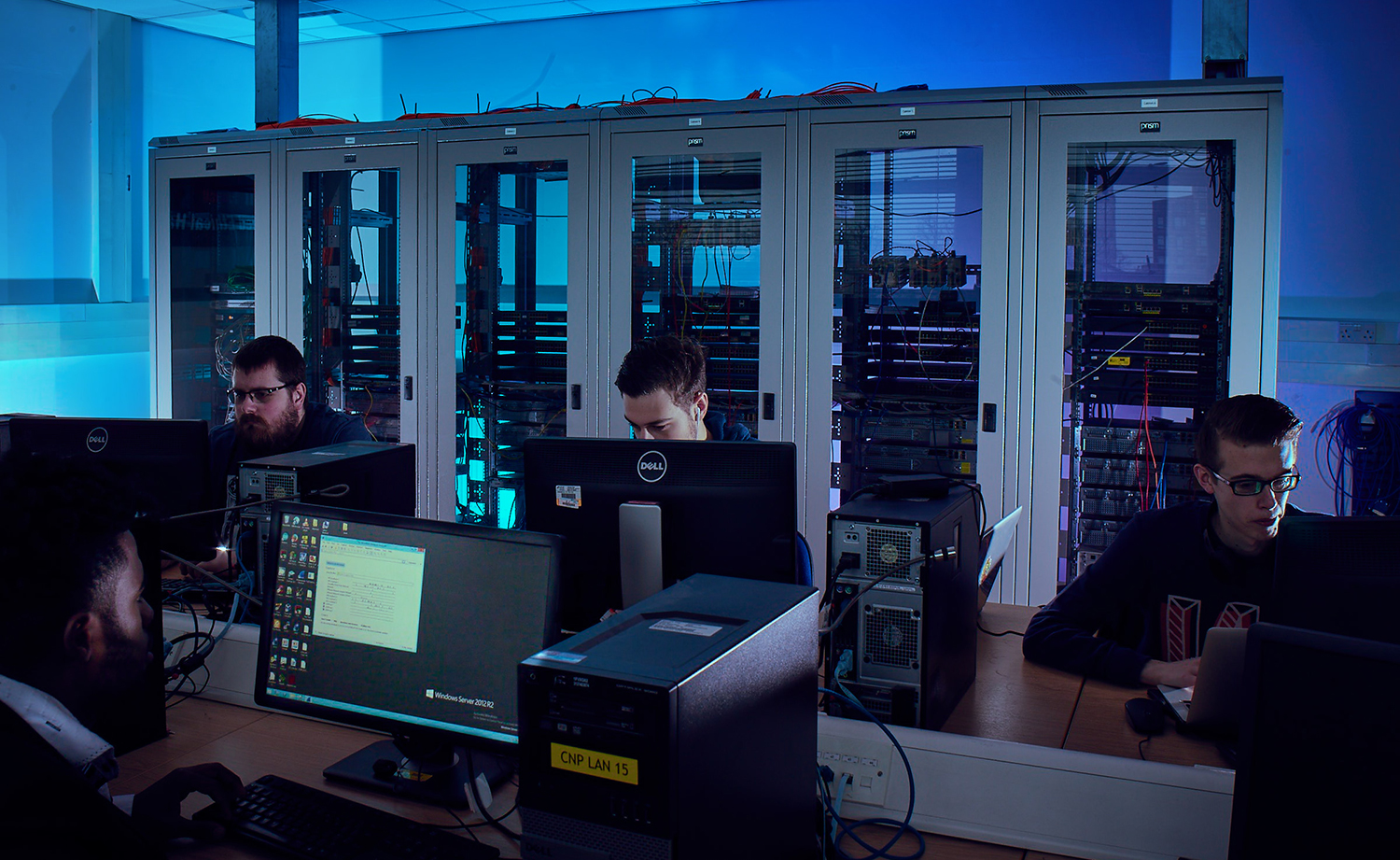OSI model
The OSI (Open Systems Interconnection) model was created by the International Organization for Standardization (ISO), an international standard-setting body. It is designed as a reference model to describe the functions of communication systems. The OSI model provides a framework for creating and implementing network standards and devices and describes how network applications on different computers communicate through network media.
The OSI model has seven layers, with each layer describing a different function of data traveling through a network. Here is the graphical representation of these layers:

These layers are usually numbered from the last layer, which means that the physical layer is considered to be the first layer. It is useful to remember these layers because there are bound to be some questions about them in the CCNA exam. Most people learn the mnemonic "Please don’t throw sausage pizza":

So, what is the purpose of these layers?
They are most commonly used by suppliers. They enable them to implement certain functions in network devices, enabling easier interoperability with other vendors.
Here is a brief description of each of the layers of the OSI model.
Physics-defines how to move bits from one device to another. It describes in detail how cables, connectors and network interface cards should work and how to send and receive bits. Data link-encapsulates packets in frames. The framework contains heads and trailers that allow devices to communicate. The header (the most common) contains the source and destination MAC addresses. The trailer contains a frame check sequence field to detect transmission errors. The data link layer has two sublayers:
1. Logical Link Control – used for flow control and error detection.
2. Media Access Control – used for hardware addressing and for controlling the access method.
Network-Define device addressing, routing, and path determination. The device (logic) is addressed to identify a host on the network (e. g., through its IP address).
Transfer-Split the bulk of the data received from the upper-layer protocol. Create and terminate the connection between the two computers. For flow control and data recovery.
Session-Defines how to establish and terminate a session between two systems. Presentation-Define the data format. Compression and encryption are defined in this layer. Application-This layer is the closest to the user. It enables the network application to communicate with other network applications.
It is common practice to refer to a protocol by layer number or layer name. For example, HTTPS is called the application (or tier 7) protocol. Network devices are sometimes also described according to the OSI layer they run – for example, layer 2 switches or layer 7 firewalls.
The following table shows which protocols reside on which layer of the OSI model:

TCP/IP model
The TCP/IP model was created by DARPA in the 1970s and is an open, vendor-independent public network model. Like the OSI model, it describes the general guidelines for designing and implementing computer protocols. It consists of four layers: network access, Internet, transport and applications:

The following picture shows the comparison between the TCP/IP model and the OSI model:
As can be seen from the above figure, the number of layers of the TCP/ IP model is less than the OSI model. The application, presentation, and session layers of the OSI model are merged into a single layer in the TCP/ IP model. In addition, the physical and data link layer is referred to as a network access layer in the TCP/ IP model. The following is a brief description of each layer:
Link-defines the protocols and hardware needed to transfer data over a physical network. Internet-defines the protocol for logical packet transmission over the network.
Transport-defines the protocol used to set the transport service level for the application. This layer is responsible for the reliable transmission of data and error-free transmission of data packets. Application-defines the protocol for node-to-node application communication and serves the application software running on the computer. Differences between OSI and TCP / IP models.
In addition to the obvious difference in the number of layers, there are some other differences between the two models. The OSI model specifies the steps needed to transmit data over the network, in which it is very specific and defines the protocols and methods used by each layer. The TCP / IP model is not so specific. It can be said that the OSI model specifies the TCP / IP model and the TCP / IP model.
Note: if you are interested in the technology of the CCNA certification exam, and you can follow SPOTO. we can provide more useful exam information.
More you may be interested:
1. 802.1Q Tunneling (Q-in-Q) Configuration Example
2. Cisco DTP (Dynamic Trunking Protocol) Negotiation

 Join Telegram Study Group ▷
Join Telegram Study Group ▷














